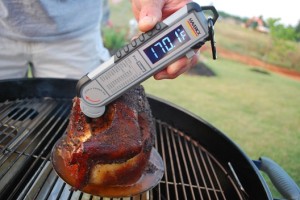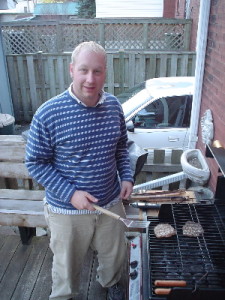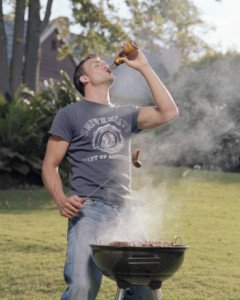BBQ food safety tips….in August…a little late in the game for us in Canada, then I realized this story stems from Australia.
Food safety tips for parties and BBQs
Storage:
Ensure you have enough fridge and freezer space
Keep cold foods in the fridge until they are ready to serve e.g. salads
Temperature controls:
The bacteria that cause food poisoning grow rapidly between 5°C and 60°C (also known as the temperature danger zone)
Hot food should be served steaming hot – at least 60°C
Food should be thoroughly cooked before consuming. It is recommended that poultry, minced meats and sausages be cooked until well done right through to the centre. No pink should be visible and the juices should run clear. Alternately, you can use a meat thermometer to check if the meat is properly cooked.
Nope. Always use a thermometer to ensure safety of foods, never rely on color alone. This will also prevent over-cooking meats/fish that would otherwise lend to formation of heterocyclic amines (HCA’s), potent mutagens formed when meats/fish are cooked using high temperature methods. One way to reduce the formation of HCA’s is to marinate your meat/fish before grilling. Studies have shown that marinated meats and fish contained lower levels HCA’s than non-marinated samples with the exception of pan-fried salmon(1). 
Preventing cross-contamination:
Wash and dry hands thoroughly before preparing food (and in between handling raw and cooked foods)
Keep raw and cooked food separate – don’t let raw meat juices drip onto other foods
Use different knives and cutting boards for raw and cooked foods
Ensure that benches, kitchen equipment and tableware are clean and dry
Avoid making food for others if you are sick
Leftovers:
Refrigerate any leftovers straight away
Leftovers should be consumed within 3 days
Reheat leftover food to at least 75°C or until it is steaming hot
1. Heterocyclic amines content of meat and fish cooked by Brazilian methods. 2010. J Food Compost Anal. Feb 1; 23(1): 61–69.














